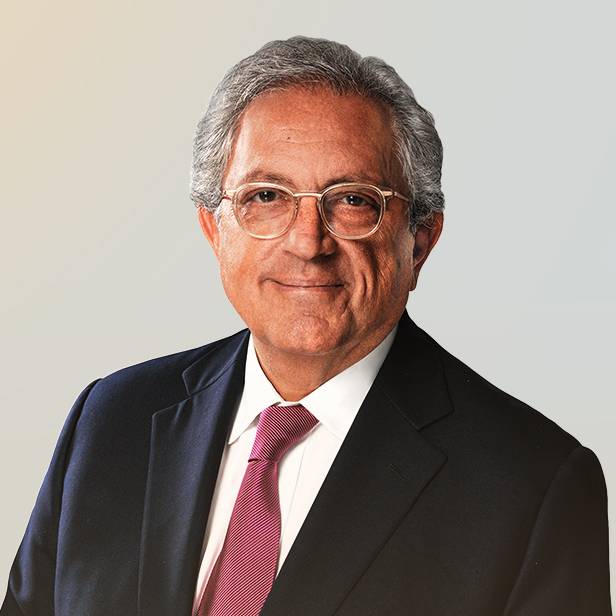Outlook of COVID-19 Impact on Global Medtech M&A / Business Development
Apr 2020
The Current Environment – Commentary
COVID-19 is delivering a true one-two punch to the economy. The first punch stunned global markets with a complete shut-down of activity, but coming out of March (Asia) and April (N. America and Europe) we are seeing the first signs of a return to consciousness, albeit with waning optimism for a V-shaped recovery. Now comes the second punch, which brings a constrained level of economic activity along with real uncertainty around how lasting the effects will be.
Through our survey and accompanying discussions with global representatives from large med tech strategics, executives of medical device outsourcing firms, and senior partners of active private equity firms in the medical technology sector, there are some clear areas of general consensus, but to be expected pockets of differing views based upon one’s exposure to the cascading events triggered by the virus. Providers of respiratory products, ICU equipment, COVID-19 related Dx testing, telehealth and chronic disease management products have been more insulated, and many have flourished. In contrast, companies with greater exposure to elective surgery products (a debatable definition) have been more negatively impacted, with initial signs only in the past week or two that procedure volumes are beginning to pick-up. Although we are just at the beginning of Q1 earnings announcements, this contrasting impact has been clearly demonstrated in the stock price performance of several publicly traded companies shown in the graphs below.
| COVID-19 / Chronic Disease Related
|
Elective Surgery Impacted
|
|
Share price performance measured from S&P record high date of February 19, 2020 through U.S. market closing April 27, 2020 |
|
Encouragingly, the market expects to see a significant rise in procedure volumes in the coming weeks, driven by lockdown easing, patients’ healthcare needs and care providers’ eagerness to experience relief from substantial lost earnings. OEMs and MDOs are collaborating closely to ensure supply chains are healthy and prepared to meet the increase in demand. The reality is that while certain medical device categories are struggling to keep up with demand, significant inventory has been built up in many other categories. After the initial increase in procedure volumes, the question will be: in the near-term do volumes return to pre-COVID levels and do we witness a return to growth, or do volumes settle into a steady state at lower levels for some time due to residual economic and COVID-driven living conditions? The ramp back to a more normalized healthcare environment will dictate the ramp in business development activity, but no surprise we have already seen a precipitous decline globally, as shown in the graph below.
2020 vs. 2019 YTD Global MedTech M&A Activity
Lincoln Perspective
As was suggested in responses to question 3 in our survey (pre COVID-19 expected deal activity), 2020 expectations were high, and through February global deal volume was up nearly 13% yr/yr (44 vs 39 deals), and if trends were to continue, March would likely have performed similarly. Instead we saw an approximate 77% and 46% yr/yr decline in activity in March and April, respectively (with a few days left in April to reduce the decline). With regards to the impact and consequences to business development activity going forward, below are some of our initial takeaways and perspectives:
| Business development sentiment coming into 2020 was extraordinarily strong, so even in light of COVID-19, assuming we do not experience a second significant lockdown, we see activity returning to above average levels in 2021 |
| COVID-19 has illuminated weaknesses and opportunities, and for many companies we anticipate a thorough review of overall business development strategies and instances of pivots; for instance, (i) companies weighted/concentrated in elective procedures may look to diversify through the pick-up of chronic condition products or telehealth platforms; (ii) manufacturing supply chains may see increased reshoring or near-shoring to ensure local demand needs are met; and (iii) global market diversification may make geography an even more important factor in business development decisions leading to a broadened buyer and target universe for many sellers and buyers |
| Healthcare and medical technology business development activity will return more rapidly towards pre-COVID-19 levels vs. other industries Lincoln covers, with PE (already active), MDO and then OEM coming back online in that order |
| Interestingly, PE demand remains high; however, supply of deals has declined as sellers steady their businesses and reassess market timing |
| Even when business development activity picks up, valuation gaps between buyers and sellers will contribute to suppressing activity through the remainder of the year – with the tightening credit markets being the largest contributing factor |
| Relative to historical numbers, a small number of acquisitions will be announced in the coming months, but with the large majority having already been engaged pre-COVID-19. Until travel restrictions (which are limiting on-site diligence, management team meetings, case observations, etc.) are lifted, we see new deal activity remaining suppressed |
| Sellers most likely to be acquired by an OEM should look to the public markets and public communications for which types of organizations are faring the best in the recovery as an indicator for when relevant target buyers will be likely to engage |
| From a timing standpoint, the majority of respondents were split fairly evenly between business development activity returning to normal levels between 4-6, and 7-12 months; at the earliest this suggests late summer (Aug), with a mid-point at year-end |
| Related to timing around launching a process, the majority of respondents suggested to prepare and launch after the first real evidence of the COVID-19 crisis subsiding, with the second most respondents suggesting to wait until there is clarity around a second wave – unsurprisingly, COVID-19 related medical milestones will be the largest influencer in the ongoing sentiment related to this question over the summer, stay tuned… |
Global Med-Tech Survey Results
Participation
- Lincoln International conducted an online survey regarding the impact of COVID-19 upon business development and M&A activity
- Between April 9 and April 21, 2020 Lincoln canvassed over 300 individuals globally within the medtech community active in business development / M&A
- Strong global participation across medtech original equipment manufacturers (OEMs), medical device outsourcing companies (MDOs) and private equity firms with a meaningful focus on the medtech sector (PE)
Q1 | What type of organization do you represent?
Q2 | In which geography are you located?
No Surprise, COVID-19 Will Have a Negative Impact on 2020, but MedTech is Not Closed for Business
- Pre-COVID, respondents expected a strong year for M&A and business development, with 78% anticipating very high or high activity, and no respondents expecting below average activity
- Post-COVID, that figure has dropped to 32%, with an additional 2 in 5 respondents anticipating below average or low activity in this post-COVID climate
|
Q3: |
Pre Covid-19, how active would you rate your expected medical technology business development activity was going to be in 2020 (e.g. M&A, investments, partnerships, etc.)? |
|
|
Q4: |
Post Covid-19, how active would you rate your expected medical technology business development activity will be for the remainder of 2020? |
|
In-Progress Deals Expected to Get Done; Mixed Views on New Activity
- Approximately two-thirds of respondents expect either i) no change, or ii) near-term re-engagement, on “in-process” deals, while just 1% said “in-process” deals are on hold and uncertain to resume
- However, while 44% of respondents report they are active and prepared to do new deals, more than half expect new deals in 2020 to be the exception or they are unlikely, and in some cases unwilling, to submit indications of interest
|
Q5: |
Which of the following best describes the status of your in-process medical technology business development and acquisition activities? |
Most common response by organization:
Most common response by geography:
|
|
Q6: |
Which of the following best describes the status of your organization engaging in new medical technology business development and acquisition activities in the near-term? |
|
Advise Launching Sale Processes Once Market Stabilizes
- 78% recommend high quality medtech companies launch a process either upon material signs of a recovery (47%) or once the risk of a broad second wave has passed (31%)
- ~70% predict business development activities will return to normal levels between 4-12 months (Aug at the earliest and Dec at the midpoint)
|
Q7: |
If you were in the board room of a high-quality medical technology company, what advice would you give about launching a process? |
|
|
Q8: |
What is your prediction for when business development activities will return to normal levels across the medical technology industry? |
|
Amid Majority Expectations of a U-Shaped Recovery, Medtech Valuations Expected to Fall ~20%
- 51% of respondents expect a U-shaped recovery, with the remainder of respondents relatively evenly distributed among a V-shaped, W-shaped and L-shaped recovery
- On average, respondents expect valuations 1 year from now to be 19% below pre-COVID levels, with responses ranging from a 0% reduction to a 50% reduction
|
Q9: |
What is your expectation for the type of recovery ahead? |
|
|
Q10: |
If valuations for acquisition targets were 100% pre-COVID-19, where do you believe valuations will be 1 year from now? |
|
Looking to 2021, Assuming COVID-19 Crisis Subsides, Anticipate High Volume of M&A Activity to Resume
- While the outlook for 2021 is significantly below respondents’ pre-COVID 2020 deal activity expectations, 53% expect high or very high levels of M&A activity in 2021, with another 36% expecting average levels
|
Q11: |
Assuming COVID-19 crisis subsides, what would you expect your level of M&A activity will be in 2021? |
|
Summary
-
Lincoln International conducted an online survey targeting senior professionals in the global medtech sector regarding the impact of COVID-19 on business development and M&A activity.
- Click here to download a printable version of this perspective.
-
Lincoln International has created a Playbook to support business leaders in documenting and articulating their COVID-19 response. To request a copy, click here. - Sign up to receive Lincoln's perspectives
Meet Professionals with Complementary Expertise

I enjoy working closely with clients to overcome challenging situations and to develop strategies to meet their business goals.
Dirk-Oliver Löffler
Managing Director | European Co-head Healthcare
Frankfurt
























